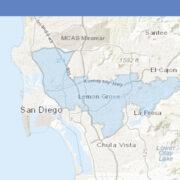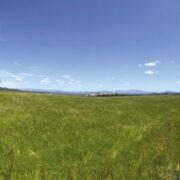California faces storms, drenching rain
EL NIÑO is coming. The tropical storm phenomenon–caused by warming ocean waters in the equatorial Pacific–has been expected for a while, but now climate scientists are saying El Niño is on track to become “one of the most powerful [storms] on record.”
The National Weather Service predicts stronger, wetter rains to virtually all of California, which has been experiencing heavier-than-usual rainfall and humidity.
“The present El Niño is already one of the strongest on record and is expected to strengthen further through the late fall or early winter months,” said Daniel Swain, a climate scientist with Stanford University. “At this juncture, the likeliest outcome for California is a wetter-than-average winter.”
The new forecast is significant because it raises the chance that El Niño will send big storms not only to Southern California and up to the Bay Area, but also to the mountains that feed California’s most important water reservoirs, said the Los Angeles Times.
California’s largest reservoirs, fueling water for much of the entire state, are Shasta Lake and Lake Oroville in the northern edge of the state.
“If patterns from previous strong El Niños repeat, there will be a number of significant storms that will bring heavy rains. What that brings will be floods and mudslides,” said Mike Halpert, deputy director of the National Weather Service’s Climate Prediction Center, which is part of the National Oceanic and Atmospheric Administration. “We’re more confident we’re going to be seeing El Niño through this water.”
“This El Niño is the strongest on record,” Halpert added, noting the record dating back to 1950.
Weather experts said they expect El Niño rains to ease drought conditions, but not completely eliminate the drought–which is currently taking up 97 percent of the state, according to the US Drought Monitor.
While more rainfall would certainly be welcome, there is virtually no hope that one rainy winter could reverse the severe effects of California’s four-year drought, officials said. It would take many years of above-average rain and snow to officially end the drought and refill empty, dried-up reservoirs and wells, experts say.
“Californians should continue to use water carefully and sparingly in the face of the ongoing extreme drought,” state climatologist Michael L. Anderson said in a statement. “Californians should not count on El Niño to end the drought.”
The chance of heavy rain is strongest in Los Angeles and San Diego, where there is a 60 percent chance of a wet winter, a 33 percent chance of an average winter, and less than a 7 percent chance of a dry winter.
But in Silicon Valley, there is more than a 50 percent likelihood of a wet winter and less than a 17 percent chance of a dry winter. Farther north, there is a greater than 40 percent chance of a wetter-than-average rainy winter in San Francisco and Sacramento, and less than a 27 percent probability of a drier-than-normal winter, reports said.
With the latest prediction, northern parts of California, including the border with Oregon, are expected to have a 33-39 percent chance of a wetter-than-average winter, and a 28-33 percent chance of a dry one. In September, the climate forecast for that region was only equal chances of a wet or dry winter.
The latest winter climate forecast for the January-February-March time frame, predicted by the National Weather Service, comes as El Niño is still particularly strong in the Pacific Ocean, west of Peru.
A powerful storm can move the jet stream that funnels wet winter storms over the jungles of southern Mexico and Central America north, hitting California and the southern US region with intense, potentially deadly winter rain.
Halpert said the power of the upcoming El Niño could compare to previous storms in 1982-83 and 1997-98, which brought dramatic weather changes worldwide and extensive damage and flooding throughout California.
According to Swain, California could receive stronger storms than typical, especially between December through March. With sea temperatures particularly warm offshore, that could bring even more atmospheric moisture to fuel storm systems bound for this state, he wrote in his blog.
“All of this suggests that there could be a substantially increased risk of precipitation-related hazards this winter in California, including flooding and landslides,” Swain said.
The harsh effects of the drought–deaths of trees, thick ash and debris left behind by wildfires–could also increase the risk of mudslides and debris flow this winter.
In addition, “the last massive El Niño to hit California was succeeded a few months later by its sister, La Niña, the demon of drought,” commented Bill Patzert, a climatologist at NASA’s Jet Propulsion Laboratory.
“Once they arrive, the storms won’t just stop in L.A. They will continue across the southern United States, through Texas and into Florida,” Patzert said.
“The flip side of that is the northern tier of the United States tends to be relatively mild and benign.”
While more precipitation is likely across the southern part of the country, the drier-than-average weather is forecasted in most of Alaska, the northern Rockies, the northern Plains, and around the Great Lakes, according to the Climate Prediction Center.
The center does not specify how much of the precipitation falls as snow, ice, or rain, only that is overall more likely, said USA Today. Snow forecasts are dependent upon the strength and track of winter storms, which are generally not predictable more than a week in advance, the center said.
As for how cold it should be this winter, most of the western and northern US should see a milder-than-average season, as weather patterns should keep the worst of the extended cold outbreaks away.





i’m more well informed, however should we be warning others, in the Midwest and northern states, such as family, friends, etc. to prepare for this? especially in Northern California.
hmm…